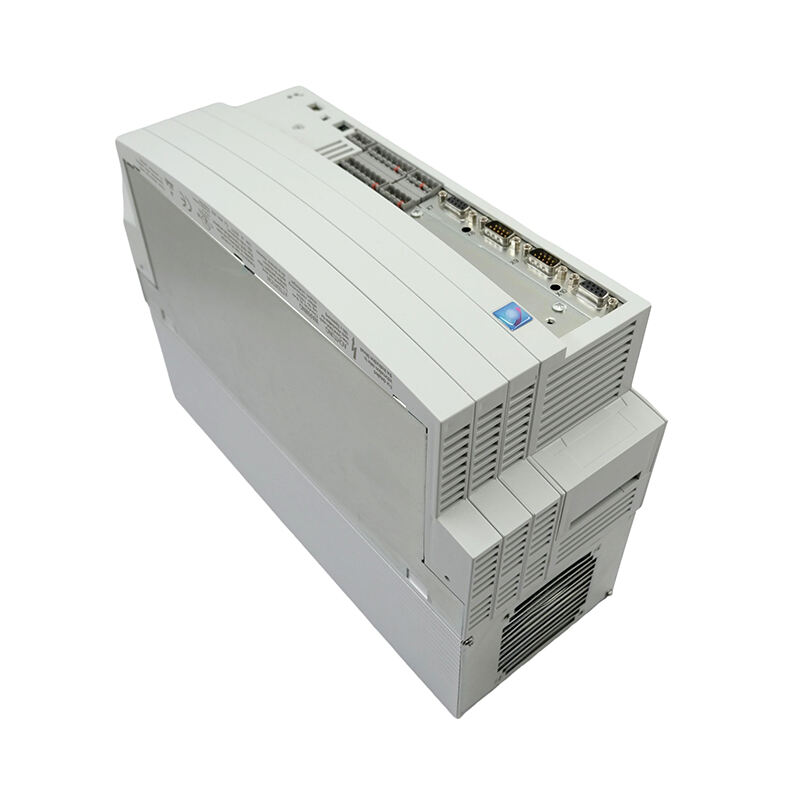Understanding the Core Technology Behind Modern Industrial Automation
In the evolving landscape of industrial automation, servo inverters have emerged as crucial components that drive precision, efficiency, and reliability in manufacturing processes. These sophisticated electronic devices serve as the brain and power source for servo motor systems, converting and controlling electrical power to achieve precise motion control. As industries continue to embrace automation at an unprecedented rate, understanding servo inverter technology becomes increasingly vital for engineers, technicians, and industry professionals.
The integration of servo inverters into automated systems has revolutionized how machines operate, enabling everything from robotic assembly lines to high-precision CNC machines. By providing precise control over motor speed, position, and torque, servo inverters have become indispensable in applications requiring exact movements and reliable performance.
Core Components and Functionality of Servo Inverters
Essential Hardware Elements
At the heart of every servo inverter lies a complex array of electronic components working in harmony. The power section consists of rectifiers, DC bus capacitors, and power transistors that handle the conversion of electrical power. The control section features microprocessors, memory units, and feedback interfaces that process signals and execute motion commands with remarkable precision.
Advanced servo inverters also incorporate specialized circuits for protection against overcurrent, overvoltage, and thermal conditions. These safety features ensure long-term reliability and protect both the servo system and the connected machinery from potential damage.
Operating Principles and Control Methods
Servo inverters operate through sophisticated control algorithms that continuously monitor and adjust motor parameters. The device receives input commands from a controller, processes feedback signals from encoders or resolvers, and generates precisely timed output signals to drive the motor. This closed-loop control system enables accurate position control down to fractions of a degree.
Modern servo inverters employ various control methods, including vector control and field-oriented control, to optimize performance. These advanced techniques allow for independent control of motor torque and speed, resulting in superior dynamic response and stability.

Applications Across Industrial Sectors
Manufacturing and Production Lines
In manufacturing environments, servo inverters play a pivotal role in automating complex production processes. They control robotic arms in assembly lines, guide precision cutting tools, and manage material handling systems. The ability to maintain consistent speed and position accuracy makes servo inverters essential for achieving high-quality product outputs and maintaining production efficiency.
Packaging industries particularly benefit from servo inverter technology, where precise synchronization of multiple axes is crucial for operations like filling, sealing, and labeling. The dynamic response capabilities of servo inverters ensure smooth acceleration and deceleration, reducing mechanical stress and extending equipment life.
Specialized Industry Applications
Beyond traditional manufacturing, servo inverters find applications in specialized industries such as semiconductor fabrication, medical equipment, and aerospace manufacturing. In these sectors, the demands for precision and reliability are exceptionally high, and servo inverters deliver the necessary performance through advanced control features and robust design.
The printing industry relies heavily on servo inverters for web tension control and precise paper handling. Similarly, textile manufacturing uses servo-controlled systems for accurate fabric positioning and tension management during processing.
Benefits and Advantages in Modern Automation
Enhanced Operational Efficiency
Implementing servo inverters in automation systems leads to significant improvements in operational efficiency. The precise control capabilities result in reduced waste, improved product quality, and increased production speeds. Energy efficiency is another notable benefit, as servo inverters optimize power consumption based on actual load requirements.
The ability to perform rapid and accurate position changes reduces cycle times and increases throughput. Additionally, the sophisticated monitoring capabilities of servo inverters provide valuable data for predictive maintenance and process optimization.
Cost-Effectiveness and Return on Investment
While the initial investment in servo inverter technology may be higher compared to simpler motor control solutions, the long-term benefits often justify the cost. Reduced maintenance requirements, lower energy consumption, and improved production quality contribute to significant cost savings over time.
The flexibility of servo inverter systems also allows for easy adaptation to changing production requirements, reducing the need for expensive equipment replacements or modifications. This adaptability extends the useful life of automation systems and provides better return on investment.
Future Trends and Technological Developments
Integration with Industry 4.0
The evolution of servo inverter technology continues to align with Industry 4.0 principles. Modern systems incorporate advanced connectivity features, enabling seamless integration with industrial networks and cloud-based monitoring systems. This connectivity facilitates remote diagnostics, performance optimization, and predictive maintenance capabilities.
Emerging trends include the implementation of artificial intelligence algorithms for adaptive control and self-optimization. These developments promise to further enhance the capabilities of servo inverters in complex automation applications.
Emerging Technologies and Innovations
Research and development in servo inverter technology focuses on improving power density, efficiency, and control capabilities. New semiconductor technologies and advanced materials are being incorporated to create more compact and efficient devices. Innovations in control algorithms and processing power continue to push the boundaries of precision and response speed.
The integration of safety features directly into servo inverters is another growing trend, simplifying system design and improving overall safety compliance in automated systems.
Frequently Asked Questions
What maintenance does a servo inverter require?
Regular maintenance for servo inverters typically includes inspection of cooling systems, checking electrical connections, and monitoring performance parameters. Most modern servo inverters are designed for minimal maintenance, but periodic checks of temperature, vibration levels, and control accuracy are recommended to ensure optimal operation.
How long do servo inverters typically last?
With proper maintenance and operation within specified parameters, servo inverters can last 10-15 years or more. Factors affecting lifespan include operating environment, load conditions, and maintenance practices. Many manufacturers offer warranty periods of 2-5 years for their servo inverter products.
Can servo inverters be retrofitted to existing systems?
Yes, servo inverters can often be retrofitted to existing automation systems. However, compatibility with existing motors, controllers, and communication protocols must be carefully evaluated. Professional assessment and planning are recommended to ensure successful integration and optimal performance.
